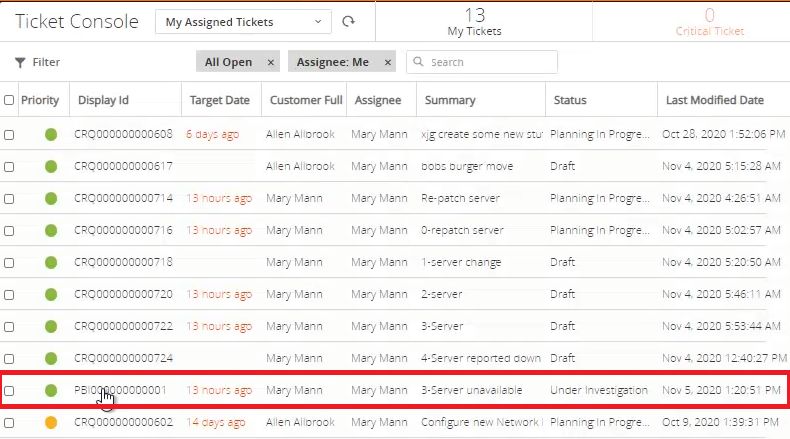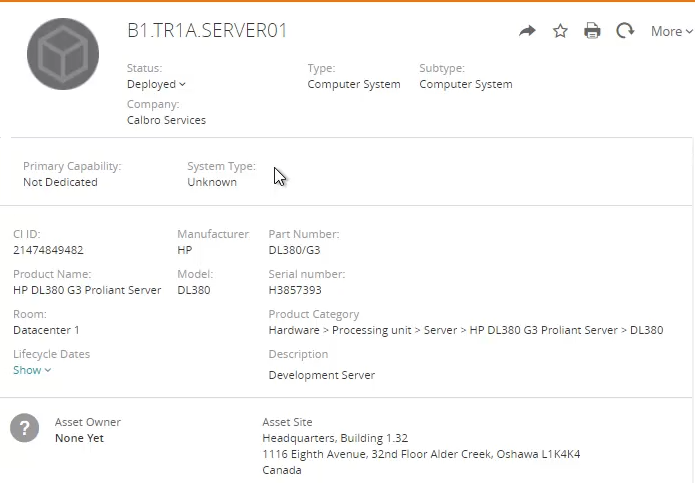BMC Remedy SmartIT - Incident Response using IRM integrated Assets
This topic explains how to perform an enhanced incident response and analysis using BMC SmartIT with IRM.
To start, let's assume the user has opened the BMC SmartIT application and noticed there is an incident that has been raised for a server being unavailable:

When taking a look at the incident details, one can see it is associated with a particular asset - displayed as a hyperlink under the Affected Asset property:

The asset data has been synchronized with IRM design data as part of the Discovery Integration between IRM Equipment and BMC's CI database.
IRM synchronizes and consolidates the data it manages and maintains with the BMC CMDB Asset database, while the BMC Product Catalog is enhanced by synchronizing Product Definitions from IRM's Hardware Library.
If you click on the Asset Name hyperlink another form opens, showing:
-
IRM Asset ID,
-
Product Name, which comes from the IRM product Library,
-
along with the Model number and the Part Number,
-
Serial Number data,
-
as well as the Categorization of the hardware unit:

In order to understand and address the incident report the user needs more information about this asset - e.g. its physical location and what it's physically connected to. This is enabled by click on a designated action item - Open Asset in IRM:

This will take this asset information and open its design model in the IRM system.
Only by using the integration with IRM can SmartIT users access the powerful visual CMDB provided by IRM, giving the SmartIT operator instant visibility into the assets facility and location data, 3d visualizations and associated connectivity, dependency and state information.
Inside IRM, one can see the target asset information and all of it's identifying information, such as:
-
Product Information (front and rear device images, dimensional data, environmental data such as heat, power, etc),
-
Port Utilization (port status, connected cable and connected hardware) Arrangements on the device, as well as front and rear image data,
-
Slot Utilization (slot status, installed modules, available slots, etc) ,
-
Location data showing its exact position within a floor, within a rack elevation or within a slot on a chassis if its module.
-
Dependency layouts showing all of the devices to which the impacted object is connected to help in resolving the issue.
This and additional information provided by IRM helps the user identify a potential cause for the server outage, which can then be passed back into the SmartIT Ticket and used to help resolve and close out the incident, as demonstrated in the following sections. As a result, you should be able to understand how IRM integrates with BMC asset management system and SmartIT incident problem management process and greatly enhances your organization's ability to visualize and analyze your IT infrastructure.